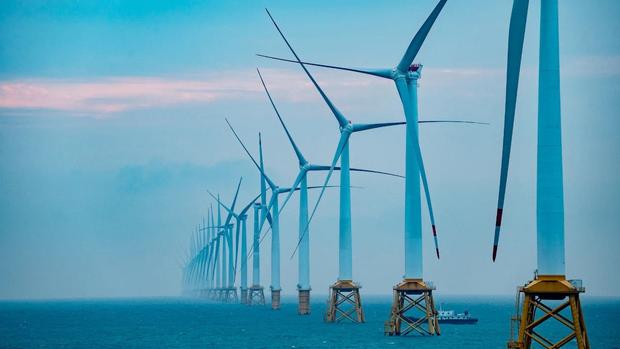 This undated file photo shows the Yangjiang Nanpeng Island offshore wind farm. (PHOTO / CHINA GENERAL NUCLEAR POWER CORP)
This undated file photo shows the Yangjiang Nanpeng Island offshore wind farm. (PHOTO / CHINA GENERAL NUCLEAR POWER CORP)
LONDON - A record 680 gigawatts (GW) of wind energy capacity is expected to be installed by 2027 but policymakers need to ensure supply chain bottlenecks do not slow growth to avoid missing climate targets, according to an industry report released on Monday.
The Global Wind Energy Council (GWEC) report said policies have set the scene for accelerated deployment of onshore and offshore wind, with the industry expected to install 136 GW a year to 2027.
Total installed capacity grew to 907 GW globally last year, up 78 GW from 2021. This year new wind capacity could pass a milestone of 1 terawatt
Total installed capacity grew to 907 GW globally last year, up 78 GW from 2021. This year new wind capacity could pass a milestone of 1 terawatt (TW).
ALSO READ: High stakes at sea in global rush for wind power
Although GWEC expects 1.2 TW of new capacity to be installed by the end of the decade, that is only 68 percent of the capacity needed to help limit the global average temperature increase to 1.5 degrees Celsius.
"Delivering to this demand requires stronger supply chains across the renewables industry – just at a time when supply chains are threatened by inflation, rising interest rates, geopolitics and bottlenecks," said Morten Dyrholm, chairman of the GWEC.
According to the report, spare capacity in the wind energy manufacturing industry is likely to disappear by 2026 unless urgent investment occurs in the supply chain, industrial capacity, as well as training and skills.
For offshore wind, Europe's turbine assembly capacity will no longer be able to support growth outside the continent and will have to double from current levels to meet European demand alone.
READ MORE: China accounts for half of global new offshore wind capacity
Shortages are expected to emerge in the second half of this decade for key components such as blades and generators.
Both Europe and the United States face the risk of supply chain shortfalls, especially if they follow through with policies to center production and manufacturing domestically, according to the report.


